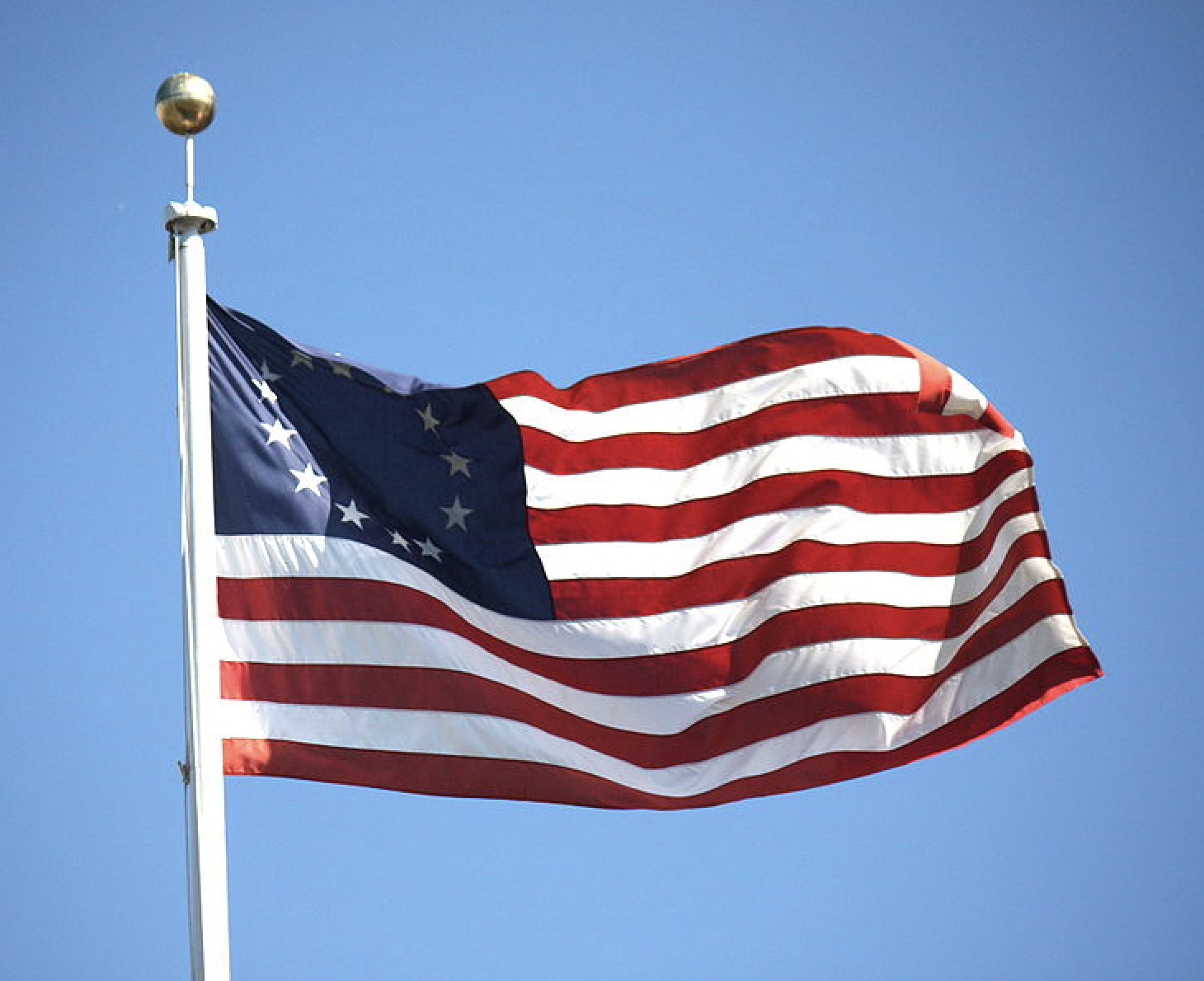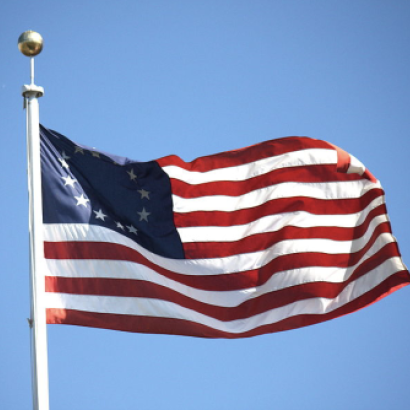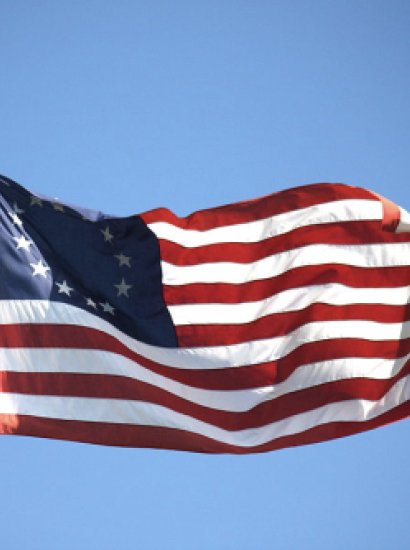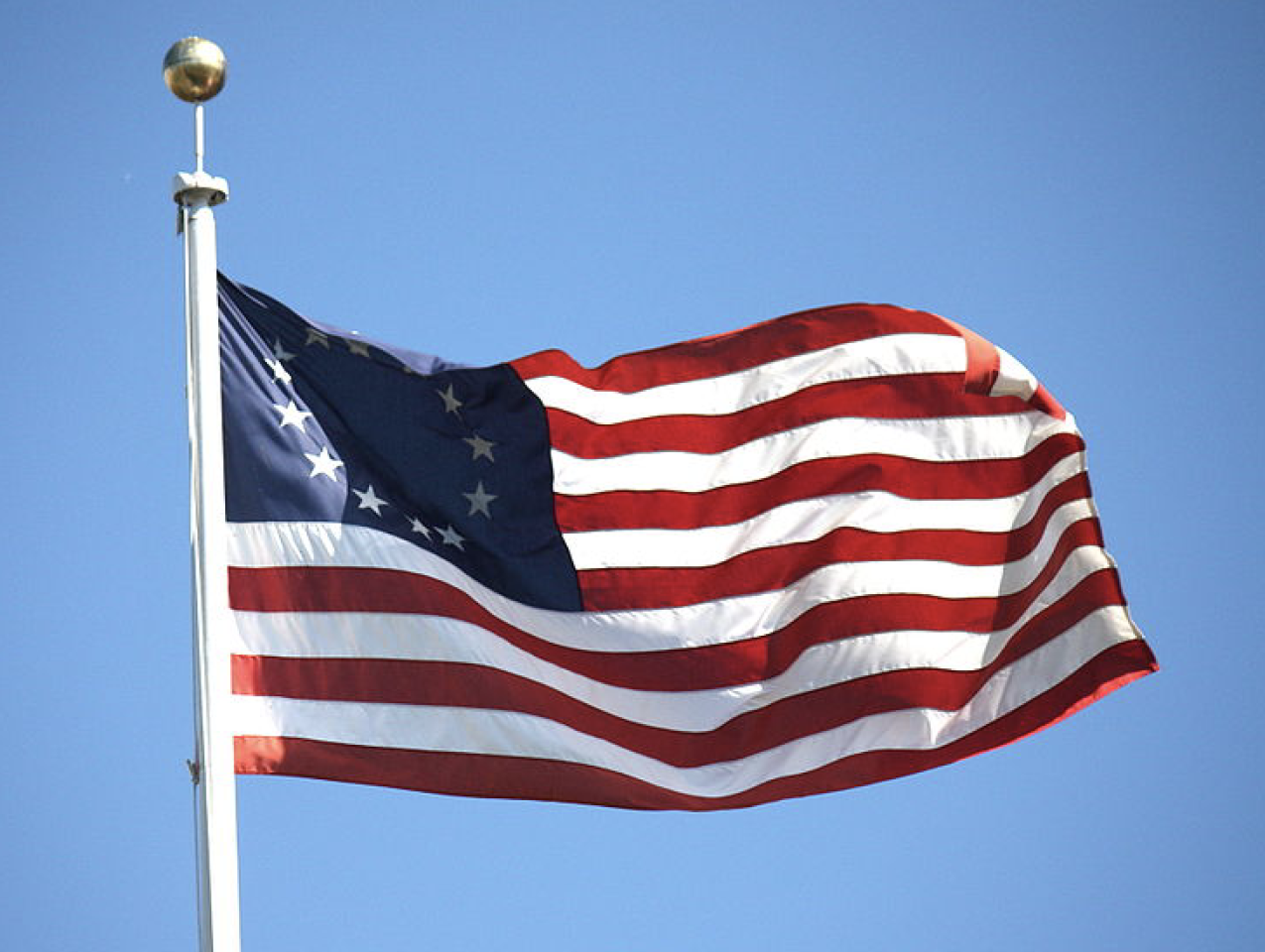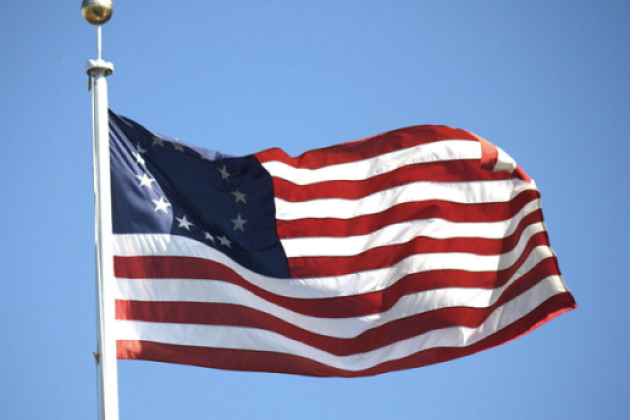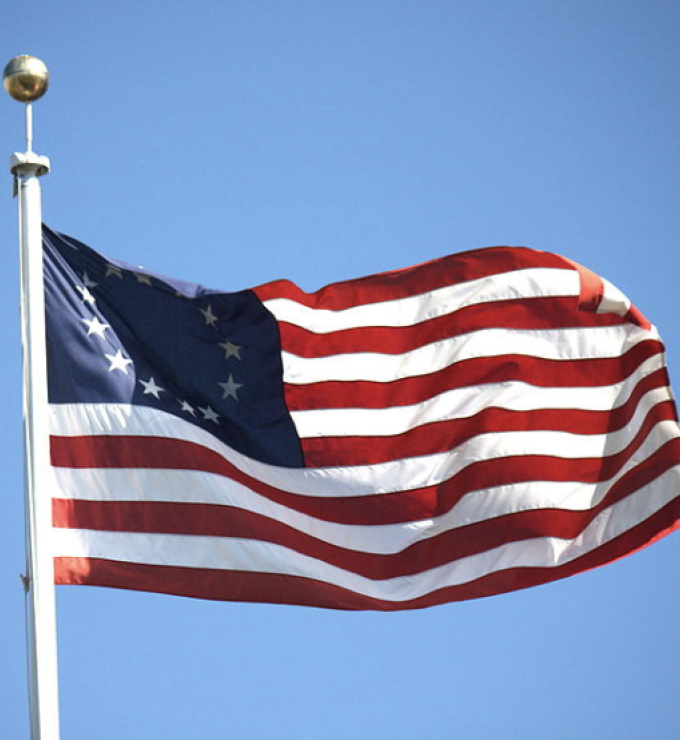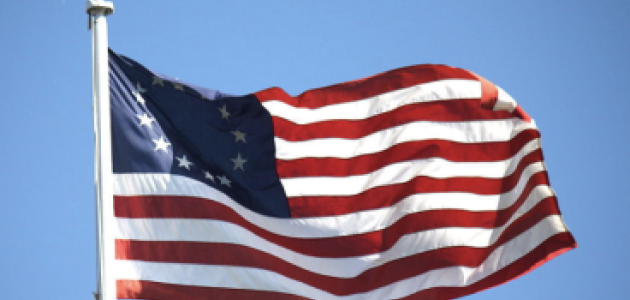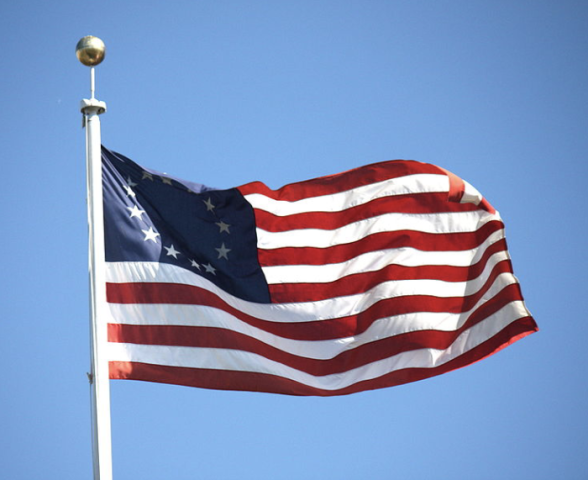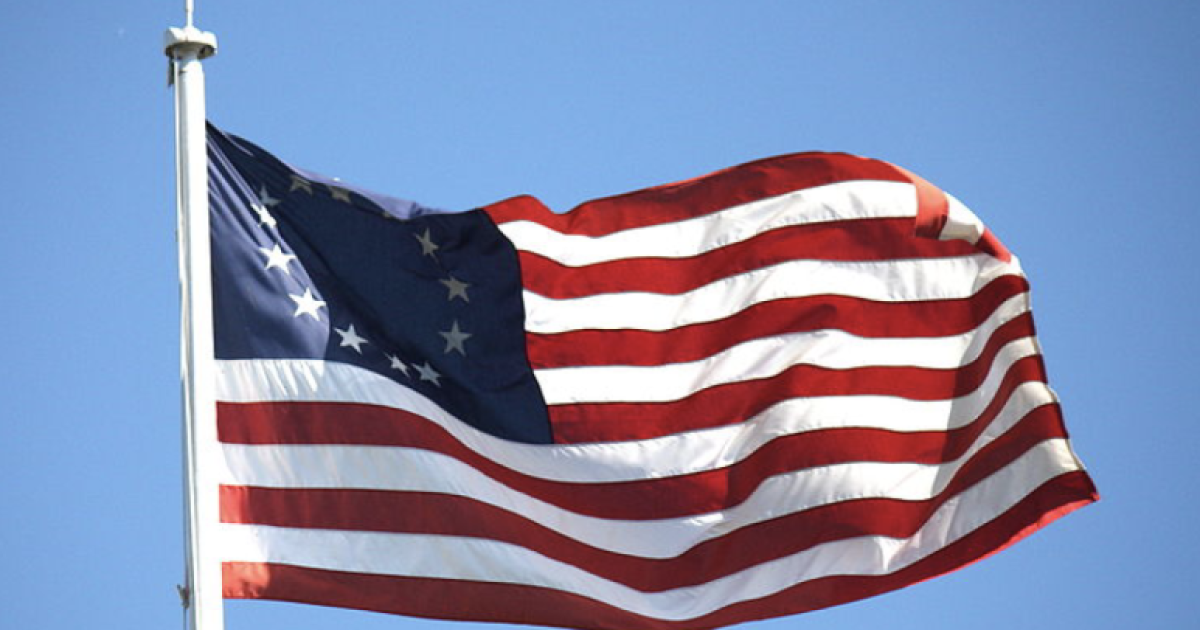- Law & Policy
Nike spokesman Colin Kaepernick recently ignited yet another rancorous debate about patriotism and race when he tweeted that he found a new pair of Nike’s shoes to be “offensive.” The shoes included an image of the original thirteen-star Betsy Ross American flag. Nike responded by cancelling its release of the Air Max 1 USAs, driving up the price of those few pairs still in the market.
Ironically, the flag was prominently featured at Barack Obama’s 2012 presidential inauguration. Since then, it has become a de facto symbol of slavery and white supremacy, perhaps as a result of Donald Trump hawking on Amazon his very own American flag lapel pin. Indeed, Professor Michael Eric Dyson of Georgetown has compared displaying the Betsy Ross flag with flying the Nazi swastika or burning a cross on the Fourth of July. To be clear, there is no need to whitewash the serious injustices that have occurred throughout our country’s history. However, it is important to understand that the flag, in all its forms over our nation’s history, remains a symbol of the best our country has to offer in war and peace—its stable institutions, unparalleled economic and artistic achievements, the welcoming of foreigners to its shores, and its charitable and generous spirit.
Nike thumbed its nose at this powerful symbolism—and perhaps that move makes sense for its bottom line. Nike knows its customer-base better than anyone else does. The first principle of marketing is that product promotion does not proceed by majority rule. Nike knows that it can alienate the majority of the population so long as it expands its loyal customer base, for whom a defiant Kaepernick counts as something of a living legend since he first took a knee during the playing of the national anthem throughout the San Francisco Forty-Niners’ 2016 season.
Nike may not have any reason to regret its business decision. In fact, the company enjoyed a 2% bump in its stock price following the shoe’s cancellation. But the rest of us should worry deeply about the broader implications of the company’s decision, taken regrettably just before the Fourth of July. Kaepernick’s central indictment is that the Betsy Ross flag is offensive because it is a reminder of the slave culture of the founding period. Note that there is no particular allegation that Betsy Ross was a partisan defender of slavery, as Senator John Calhoun of South Carolina was. Rather, Kaepernick’s indictment can be read as saying that anything that happened when slavery was legal is necessarily tainted, so we, as a nation, are better off removing all the symbols that originated from that period in our history. Thomas Jefferson and Andrew Jackson are already on the historical chopping block, and it will take just a little time for a pair of notable Virginians, George Washington and James Madison, both slaveowners, to join them as well.
It will be said, in response, that there is no reason to be upset about this current state of affairs, which rests on its own strong libertarian foundations. After all, Nike is a private company, and, as such, is entitled to the full protection of freedom of speech accorded to all other corporations. Nike’s decision to adopt this position will be judged in the marketplace, and it will either reap the benefits or suffer a loss. Therefore, the appropriate response for those who oppose its decision is not to try to suppress Nike’s speech, but to use counter-speech to present a different narrative about these national symbols to reverse the current trend.
The logic of this approach is good to a point, but there are major perils ahead. Suppose that Kaepernick’s position gains momentum. The question then arises of whether some rival sneaker company can put out its own version of the Betsy Ross flag sneaker. At this point, the correct response is that the offense this private act causes the Kaepernicks of the world cannot silence the sneaker company, or be the basis to take direct aim at anyone who wears a Betsy Ross flag on their sneakers or sweaters. After all, standard First Amendment doctrine works only because it is understood, often in painfully difficult circumstances, that mere offense taken by some people by the conduct of others never warrants silencing speech. Just that result was reached by a narrow five-to-four majority in the 1989 case of Texas v. Johnson, which held that the First Amendment made it unconstitutional for Texas to punish anyone who desecrated the American flag, no matter their great and justifiable their outrage.
As I have long argued, all protections of freedom of speech are effectively neutralized if offense counts as harm that justifies government intervention, given that someone is always offended by what another person does or says in these charged political times. To elevate those forms of outrage and indignation into a veto position has two intolerable consequences. First, it creates a huge perverse incentive to accentuate the negative in order to gain a strategic advantage over your political rivals. Remove that incentive, and it will help the angry calm down and may promote a more civil political discourse. Second, any effort to make offense the coin of the realm will necessarily create a terrifying choice for the legal system. Either everyone with an objection has a veto over the speech rights of their opponents, so the public stage falls silent, or only the sensibilities of a select few are recognized as valid. Protesting the Betsy Ross flag in the name of fighting white supremacy is just fine, but defending the flag from and challenging Nike and Kaepernick for their corrosive effect on American life should invite justified vitriol and economic boycotts. Those with unacceptable objections will be precluded from receiving a wide range of government benefits if they don’t play ball.
Does this all sound a bit improbable? Just recall the enormous pressure that was put on Hobby Lobby and the Little Sisters when they refused to respect the command that they supply contraceptive services to their employees per regulations put forward under the Affordable Care Act because of their sincere religious convictions. Sadly, in a world in which offense counts, all offenses taken cannot be given equal weight. Those with favored positions get the material and emotional support of the government, but those with disfavored positions are cut out from the start.
To see how this all plays out, consider a third case—a hypothetical—in which the Betsy Ross flag is painted on the wall of a public park or flown above a government building as part of a holiday celebration. Now suppose a small but vocal minority of the population finds no significant difference between waving the confederate flag and the Betsy Ross flag. In any public forum analysis, it is impossible to ignore the sentiments of any particular group—including these fierce opponents of flying the flag. Nor is it possible to ignore the sentiments of people who line up on the opposite side of the political arena to support the flag. Consider the implications from such debate for both new and established symbols in public forums.
It is rare for a nation to develop new national symbols. But it is very common to deal with both new and old placements of traditional symbols. For these symbols, one possibility is to allow them all to be displayed in public spaces, so that each side must accept the symbols of the other. Another option is to put the addition of new symbols to a popular vote so that the majority rules. However, this cannot be the correct outcome because a popular vote gives one viewpoint impermissible dominance over others. However, long established symbols raise further complications. The burden of proof for challenging such symbols should fall on those who wish to upset the status quo.
Just this situation arose in a case from the Supreme Court’s most recent term. In The American Legion v. American Humanist Association, the Court, divided in the usual conservative-liberal split, held that the maintenance of a large, Christian cross on public property near a highway in Bladensburg, Maryland, did not violate the Establishment Clause. The cross, which was erected just after World War I to honor perished veterans, was acquired by the Maryland Planning Commission in 1961, and maintained thereafter with public funds. The case is surely a close one for it raises two points of high principle.
In its law suit challenging the cross, the American Humanists claimed standing because they “were offended by the sight of the memorial on public land.” They may have standing to sue, but the harm they claimed should never give them priority over other individuals who believe the cross has long been a fitting and appropriate memorial. It would still be a close question if someone wanted to place a new cross on the land today, especially if such land is limited and not all groups wishing to erect monuments can be accommodated.
Second, Justice Alito, who wrote the decision for the majority, gave decisive weight to the cross’s long period of unobjectionable existence, finding that the cross’s removal “would be seen by many not as a neutral act but as the manifestation of a hostility toward religion.” His simple yet powerful point is that long usage can ripen into a protected right and help maintain the stability of social institutions.
This point explains why Nike’s decision is so distasteful. It takes a long time to build the symbols of a nation. Everyone, both liberals and conservatives, should act with great caution before taking steps to rip them down. Nike and Kaepernick could not care less about tradition and culture, but their moral blindness impoverishes the collective culture for the rest of us. A divided Supreme Court understands this point. Modern progressives, sadly, do not.







